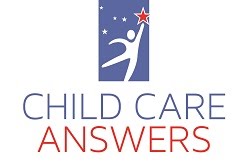I blogged about the importance of having an emergency plan in place a while back. I just received the below story in my email from Exchange Every Day. It is an account of how the Child Care Programs on Fort Hood responded to the shootings last month. Just another example of why you need to be prepared for the unexpected.
On November 5, 2009, a shooter opened fire at Fort Hood — the most populous United States military post in the world, located just outside Killeen, Texas — killing 13 people and wounding 31 others. This could have had a devastating and dangerous impact on the 1,000 children in the post's four child development centers and the 300 children in 49 family child care homes were it not for the swift and sure response of the post's child development team. Exchange interviewed J. Yveta Phillips, the Chief of Child, Youth and School Services at Fort Hood about that day...
At approximately 1:45 pm Phillips received a call that "a possible shooter was on the post" and instructing her to exercise "shelter in place." By 1:55 pm all four centers and 49 homes were "locked down." What this means is that all children were brought inside the centers, doors and windows were locked, no child or adult was allowed to enter or leave the facilities, and children and staff were instructed to stay away from windows. This lock down was in effect until 7:10 that evening. Parents were not allowed to pick up their children throughout the lock down. In addition, parents who happened to be at the center at the time were not allowed to leave and staff who were away on break were not allowed to return to their centers.
Throughout the time in lock down, teachers at the centers and homes carried on normal early childhood activities with the children so they would not experience the tension. Parents, who couldn't leave the centers, pitched in playing with the children. This worked extremely well and the only sign of discomfort occurred when it got dark and the youngest children wondered why their parents weren't picking them up. Staff were given time to call their families and check on their own children during the lock down.
To limit anxiety, Yveta made a decision not to pass on to staff all the wild and obviously inaccurate rumors flying about on the Internet. The only really stressful incident that occurred was when a SWAT team showed up at one of the centers in response to a false tip.
When the lock down was lifted, parents started arriving to pick up their children, with the last child, whose father was shot and wounded, not picked up until nearly 10 pm. When parents arrived, they were advised not to talk about the happenings of the day until they were at home. Managers ensured parents were provided with handouts containing talking points on how to discuss the incident with their children. In addition, counselors were stationed at every center for parents or staff who needed help dealing with the issues involved.
Looking back, Phillips was impressed and thankful for the professionalism of all the post's early childhood employees. In the following days, the programs received high praise from parents. Finally, Ms. Phillips observed that the response proved the value and effectiveness of their emergency preparedness training.
5 years ago









No comments:
Post a Comment